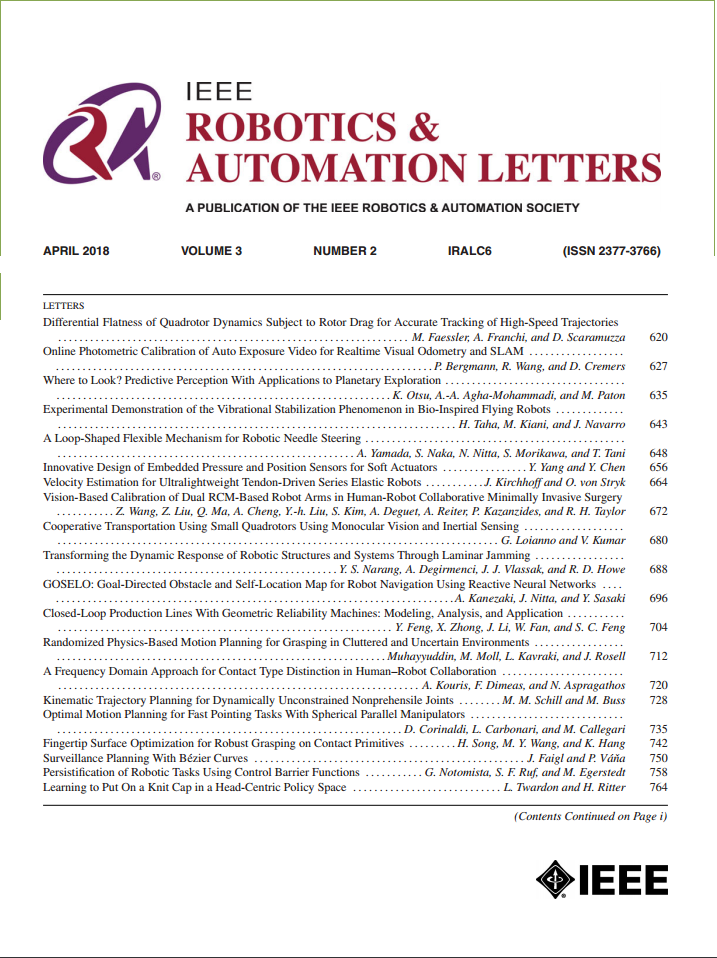A Sequential Approach for Accurate Parameters Identification of Heavy-Duty Hydraulic Manipulators Ensuring Physical Feasibility
IF 4.6
2区 计算机科学
Q2 ROBOTICS
引用次数: 0
Abstract
Accurate identification of dynamic parameters is essential for precise motion control and autonomous operation of heavy-duty hydraulic manipulators. However, due to their low-speed motion property, conventional approaches fail to simultaneously excite all parameters. To overcome this issue, a sequential parameter identification approach for heavy-duty hydraulic manipulators is proposed. All parameters are categorized based on their dynamic characteristic, and then distinct excitation trajectories have been designed to separately stimulate and identify each parameter. Dynamic parameters are fully excited, which is reflected in a reduced condition number of the observation matrix. Furthermore, an approach that ensures the physical feasibility of the identified parameters is constructed, which makes them more suitable for application in nonlinear control. The performance of the proposed method is evaluated with various identification methods, including traditional least squares, weighted least squares, and the method only considering physical feasibility. The results indicate a substantial decrease in torque prediction error compared to these methods. Specifically, the prediction accuracy of the joint torque using the proposed method has been improved by approximately 5.63% to 27.06%.一种保证物理可行性的重载液压机械臂精确参数识别的序贯方法
动态参数的准确辨识是重型液压机械臂精确运动控制和自主运行的关键。然而,由于其低速运动特性,传统方法无法同时激励所有参数。为了克服这一问题,提出了一种重型液压机械臂参数序列辨识方法。根据各参数的动态特性对其进行分类,设计不同的激励轨迹,分别对各参数进行激励和识别。动态参数被充分激发,这体现在观测矩阵条件数的简化上。此外,还建立了一种保证辨识参数物理可行性的方法,使其更适合于非线性控制的应用。采用传统最小二乘法、加权最小二乘法和仅考虑物理可行性的方法对该方法进行了性能评价。结果表明,与这些方法相比,转矩预测误差显著降低。具体而言,采用该方法对关节转矩的预测精度提高了约5.63%至27.06%。
本文章由计算机程序翻译,如有差异,请以英文原文为准。
求助全文
约1分钟内获得全文
求助全文
来源期刊

IEEE Robotics and Automation Letters
Computer Science-Computer Science Applications
CiteScore
9.60
自引率
15.40%
发文量
1428
期刊介绍:
The scope of this journal is to publish peer-reviewed articles that provide a timely and concise account of innovative research ideas and application results, reporting significant theoretical findings and application case studies in areas of robotics and automation.
 求助内容:
求助内容: 应助结果提醒方式:
应助结果提醒方式:


